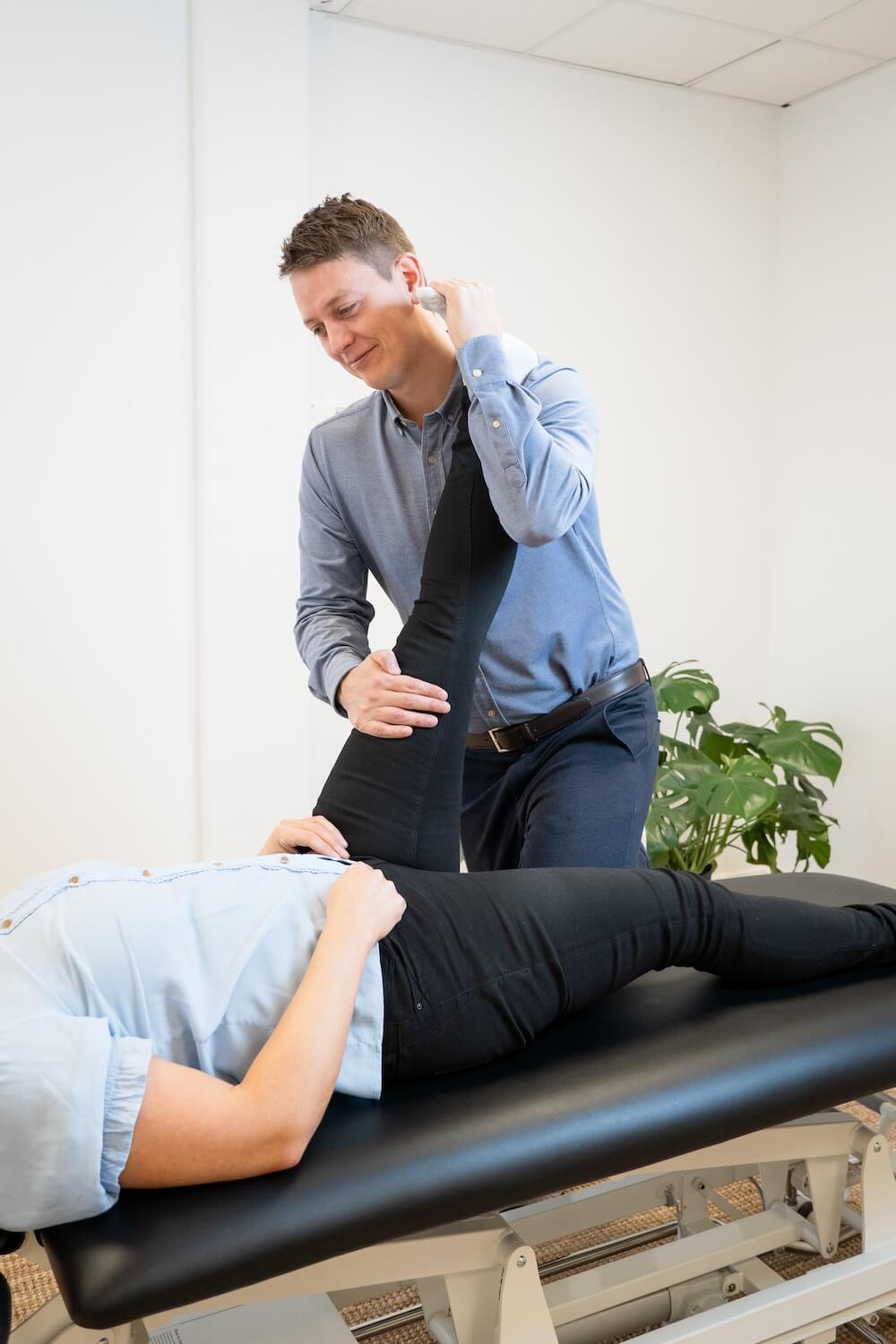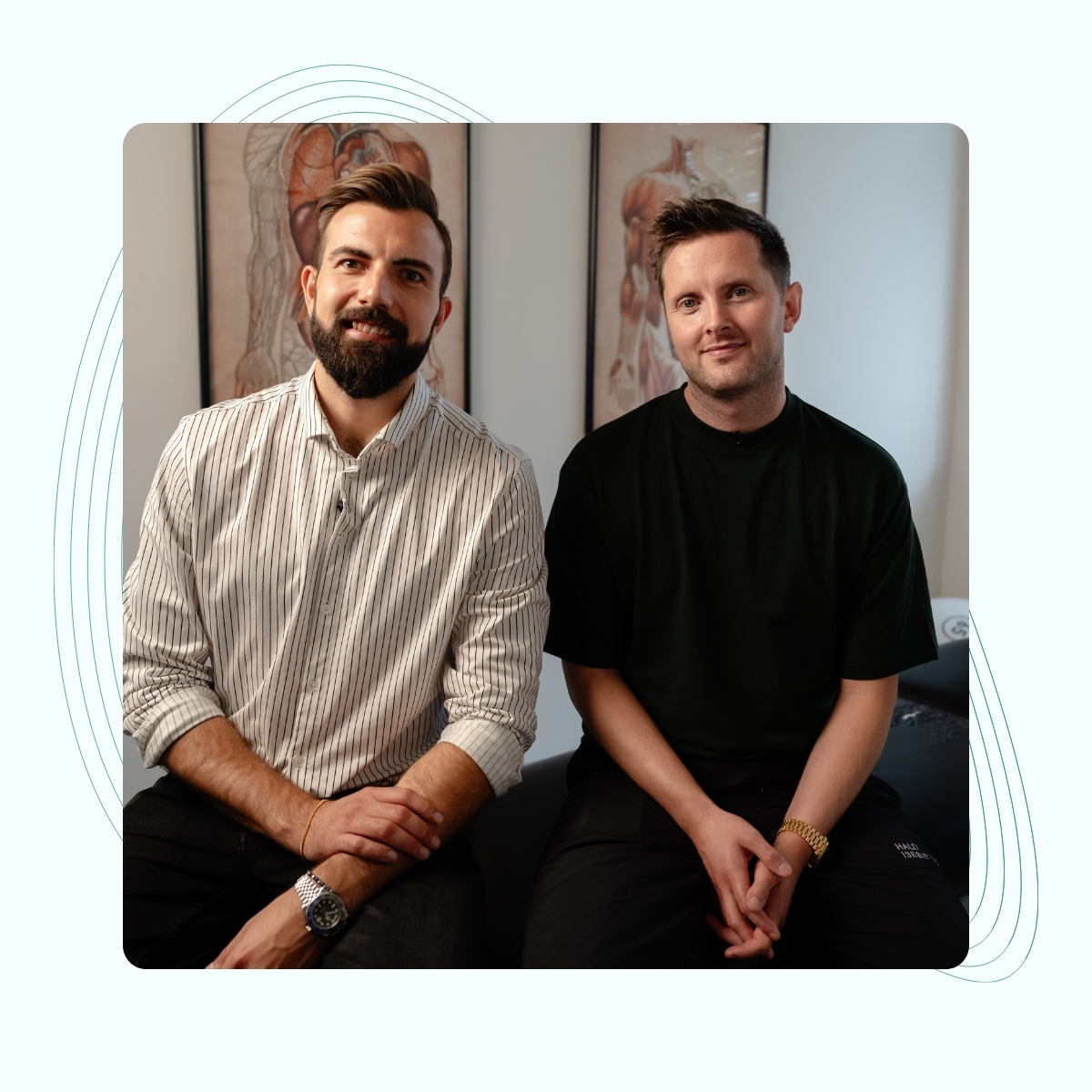We offer gentle osteopathic support for
Muscle tension or imbalances in babies and children
Learn more about muscle tension and imbalances on this page.
How osteopathy may help ease muscle tension in babies
In newborns, it is common to see areas of tightness in the fascia – the connective tissue that surrounds and supports all structures in the body. Fascia develops early in fetal life and plays an important role in holding organs in place and enabling coordinated movement.
Our scientific understanding of fascia is still evolving, yet osteopaths have long used gentle hands-on techniques aimed at supporting fascia mobility and overall comfort. These approaches are extremely soft and adapted to the needs of infants, with the aim of helping them relax and move more freely.
Jump to section [Vis]
Early signs of tension or reduced comfort in infants
- Challenges with feeding or latching
- Frequent unsettled periods
- A tendency to turn the head more to one side
- Lifting or holding the head up early when lying on the tummy
- A preference for lying with the head to one side, which may influence head shape
- Restless or short sleep cycles
- Irregular digestion
- A C-shaped or banana-shaped posture when lying on the back or tummy
- Reduced ease of movement or flexibility in certain directions
There can be many reasons why an infant may experience areas of tension or reduced mobility, and this often relates to the pregnancy or birth process.
Factors during pregnancy
The baby’s movement in the womb can be influenced by different circumstances. For example, if the pregnant person has been less mobile for long periods, if the baby has had limited space, or if the baby has been positioned in the pelvis for an extended time, it may affect how freely the baby has been able to move. Reduced movement before birth can sometimes contribute to tightness in muscles and connective tissue after birth.
Factors during birth
The birth experience can also influence a baby’s mobility and comfort. A very rapid birth, a long labour, or situations where the baby has been under increased pressure in the birth canal may contribute to asymmetries or tension patterns in the neck, head or body.
Certain birth circumstances, such as assisted delivery, caesarean section, or positional variations – may also play a role in how the baby adapts during the first weeks of life.
A check-up with an osteopath
If parents notice asymmetries, areas of tightness or challenges with ease of movement, they often choose to have their baby seen by an osteopath. During a check-up, an osteopath gently assesses mobility, comfort and tension patterns. Osteopathic techniques are soft and tailored to infants, with the aim of supporting relaxation, comfort and natural movement.
Understanding Tension and Discomfort in Babies

Early support for tension and movement patterns
When parents notice signs of tension or reduced ease of movement in their baby, gentle support early on may help the baby find more comfort and ease in their development. Many families choose to consult an osteopath in the early weeks to better understand their baby’s movement patterns and overall comfort.
In the first days after birth, many parents are naturally focused on establishing feeding. It is very common to feel unsure about milk supply in the beginning, but supply often increases with frequent stimulation and support. Feeding can sometimes feel more challenging if the baby finds it difficult to latch comfortably or maintain an efficient suck due to tension around the mouth, tongue or lips. This can also lead to discomfort during breastfeeding for the parent.
Even if your baby is bottle-fed, parents may still notice patterns of tightness or reduced mobility. Areas of tension in muscles or connective tissue can influence how freely babies move, turn, and use their bodies as they grow.
As your baby develops, follow-up sessions with an osteopath can be helpful for monitoring movement, especially during periods when babies experience rapid changes – such as teething, learning to roll, taking their first steps, or starting nursery, where motor skills are challenged in new ways.
Motor skills in infants
Before the age of 2-3 months, frequent lifting or holding of the head when lying on the tummy can sometimes reflect tightness in the connective tissue along the back, spine or neck. Many parents assume this early head lifting is due to strength, but it may also be related to how comfortable and free the baby feels through the body.
A strong preference for turning the head to one side during feeding or sleeping, or consistently choosing one side for movement, may also be linked to tightness in the connective tissue. In some cases, the baby may turn the head while the shoulder on the same side lifts slightly, showing an asymmetrical movement pattern.
These patterns can sometimes influence how freely the baby uses one arm. Parents often notice this most clearly when dressing or undressing their baby, where one arm may feel a little harder to guide into a sleeve.
Supporting and preventing tension patterns in babies
When a baby shows signs of tightness or reduced ease of movement, osteopaths often use gentle hands-on techniques aimed at supporting the mobility of the connective tissue. These techniques are soft, calming and adapted to infants, with the aim of helping the body move more freely and comfortably.
Once areas of tightness feel more relaxed, it can be helpful to follow up at home and, if parents choose, with additional osteopathic sessions. Your osteopath may offer simple at-home exercises or positioning ideas that support your baby’s natural development through play and movement.
How osteopathy may support connective tissue mobility in babies
Connective tissue contains many sensory nerve endings that influence how comfortable the body feels and how easily it moves. When the tissue feels tight, babies may show reduced movement patterns or appear less settled – both of which can influence early motor development.
Gentle osteopathic techniques are designed to support relaxation and ease within the body, helping the baby find more comfort and freedom of movement. Osteopaths take a whole-body approach, looking at how different areas of the body work together and how movement patterns may influence overall wellbeing.
As osteopaths with experience in supporting babies, our goal is always to help your child explore their natural movement, comfort and development in a calm and safe way.

Muscle and movement patterns in babies
Some babies show signs of tightness in their connective tissue from birth, while others develop these patterns as they grow. When the body feels tight or moves less freely, this can sometimes influence early motor development. In some cases, areas of tension may also affect how easily the baby uses certain movements or positions.
Parents or health professionals may notice movement patterns such as a preference for turning the head to one side, a tendency to favour one arm or leg more than the other, or a posture that appears asymmetrical. These patterns can have many possible causes, and osteopaths focus on understanding how the whole body works together rather than on any single explanation.
Conversely, some babies show increased flexibility or reduced muscular tension, which can also influence early movement patterns and how confidently they explore new skills.
Muscle tension, coordination and early motor skills
From the earliest stages of development, tight or imbalanced connective tissue may contribute to differences in how a baby moves. Babies are naturally very adaptive and often find clever ways to compensate. This can sometimes make it seem as though they have “grown out of” a movement preference, even if the underlying pattern is still present.
Gentle osteopathic support for muscle imbalances: A guide for parents
Parents are often the first to notice subtle differences in how their baby moves or uses their body. Even without knowing exactly what the cause may be, many families choose to speak with an osteopath to gain clarity and gentle support.
The following observations may be helpful when deciding whether to seek guidance from an osteopath:
- Asymmetry: Your baby appears to use one arm or leg more than the other. For example when reaching, grasping toys or crawling.
- Head and neck patterns: If an infant lifts or holds their head with significant effort in early tummy time before 2-3 months, this may simply indicate that certain areas of the body feel tight or less relaxed.
- Motor skills and confidence: A child who often seems hesitant in climbing, balancing, running or jumping, or who falls more frequently than peers, may be showing signs of reduced ease of movement through muscles, connective tissue or fascia.
Osteopaths use gentle, calming techniques to support comfort, relaxation and freedom of movement, always working alongside natural motor development.
Osteopathy and child development: supporting movement patterns
Between the ages of 3 and 7, children experience significant development in coordination, balance and combined movements. Connective tissue, the fascia that supports and links all structures in the body, plays an important role in how freely and confidently children move during these years.
Even if a child has received gentle support earlier in life, new patterns of tightness can still arise as their activities, posture and movement demands change.
Sometimes early movement preferences or feeding challenges in infancy may continue to influence posture or muscle use later in childhood. For example, tension around the jaw, neck or upper body may contribute to asymmetrical movement patterns as children grow, even if things seemed to settle during babyhood.
Supporting muscle balance as children grow
Children of all ages may show movement patterns that suggest areas of tightness or reduced ease. Osteopaths gently assess how the whole body moves and use soft, hands-on techniques aimed at supporting comfort, relaxation and natural mobility.
Alongside osteopathic care, simple play-based activities or motor exercises can help children explore new movements and build confidence in their growing bodies.
As children experience more freedom in their movement, many naturally begin to join in more fully with play, climbing, running or group activities – often taking advantage of their increased comfort and ease. Parents can further support this process with small adjustments or exercises integrated into everyday play.

Often related pain
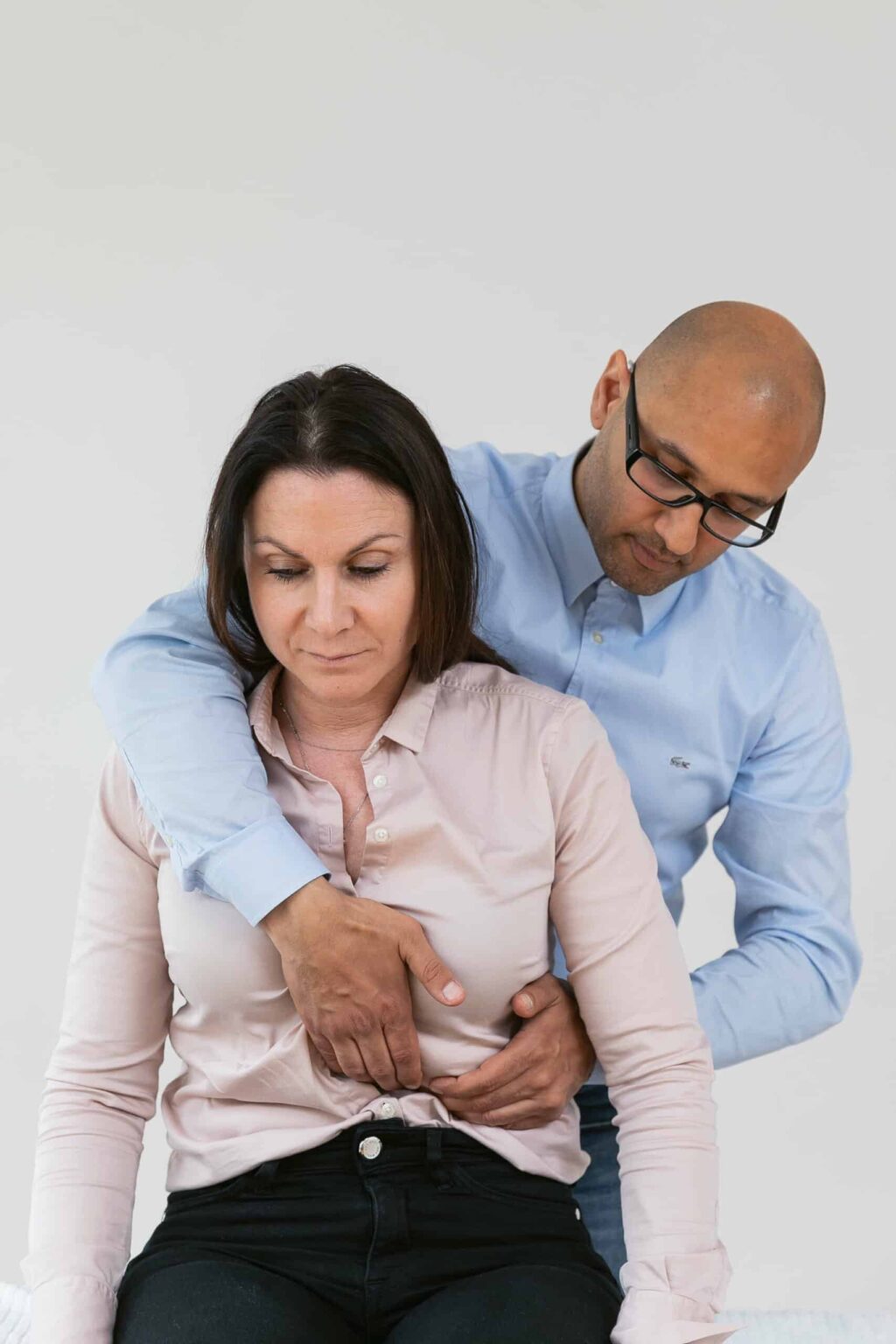
Side stitch
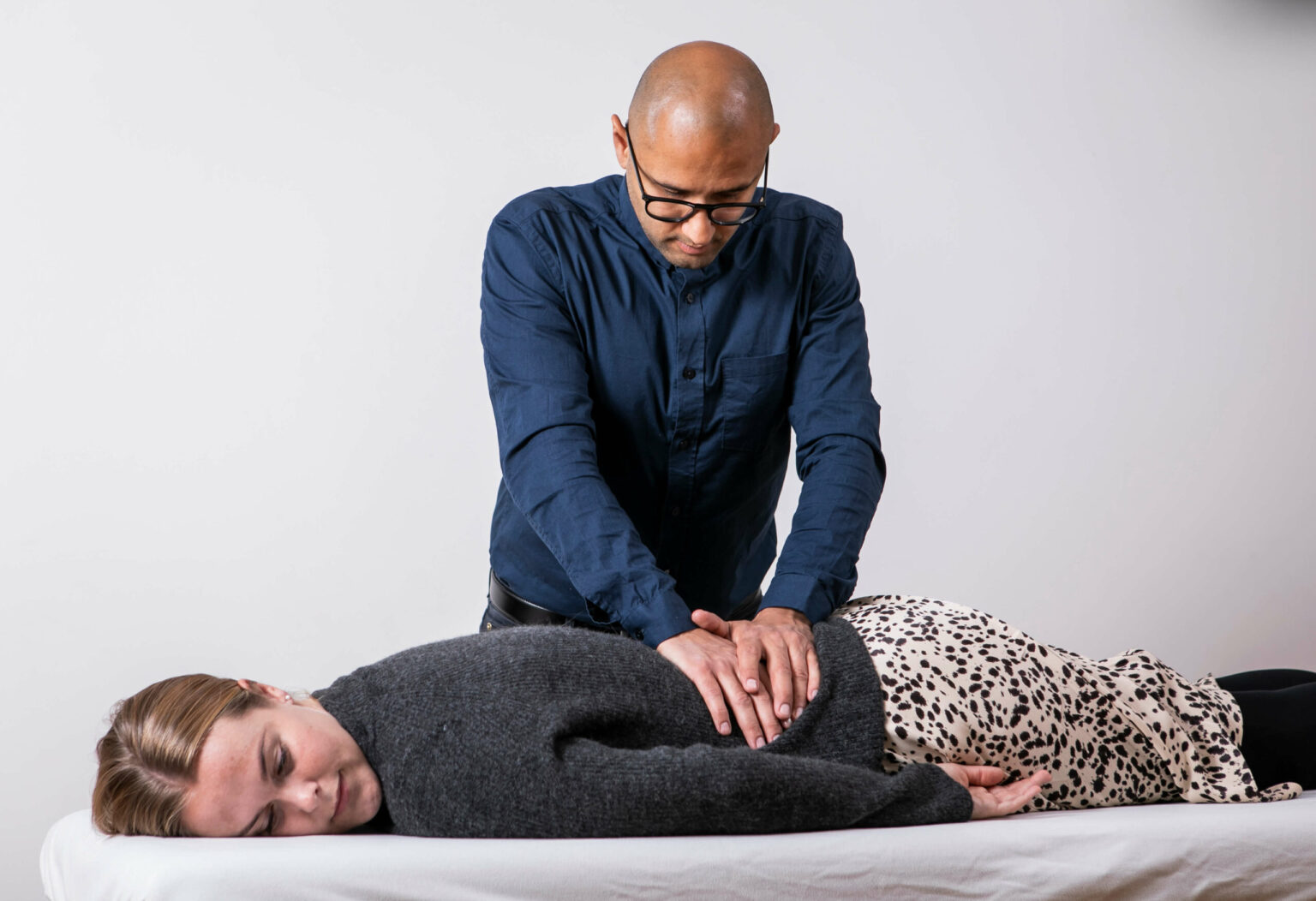
Spinal stenosis
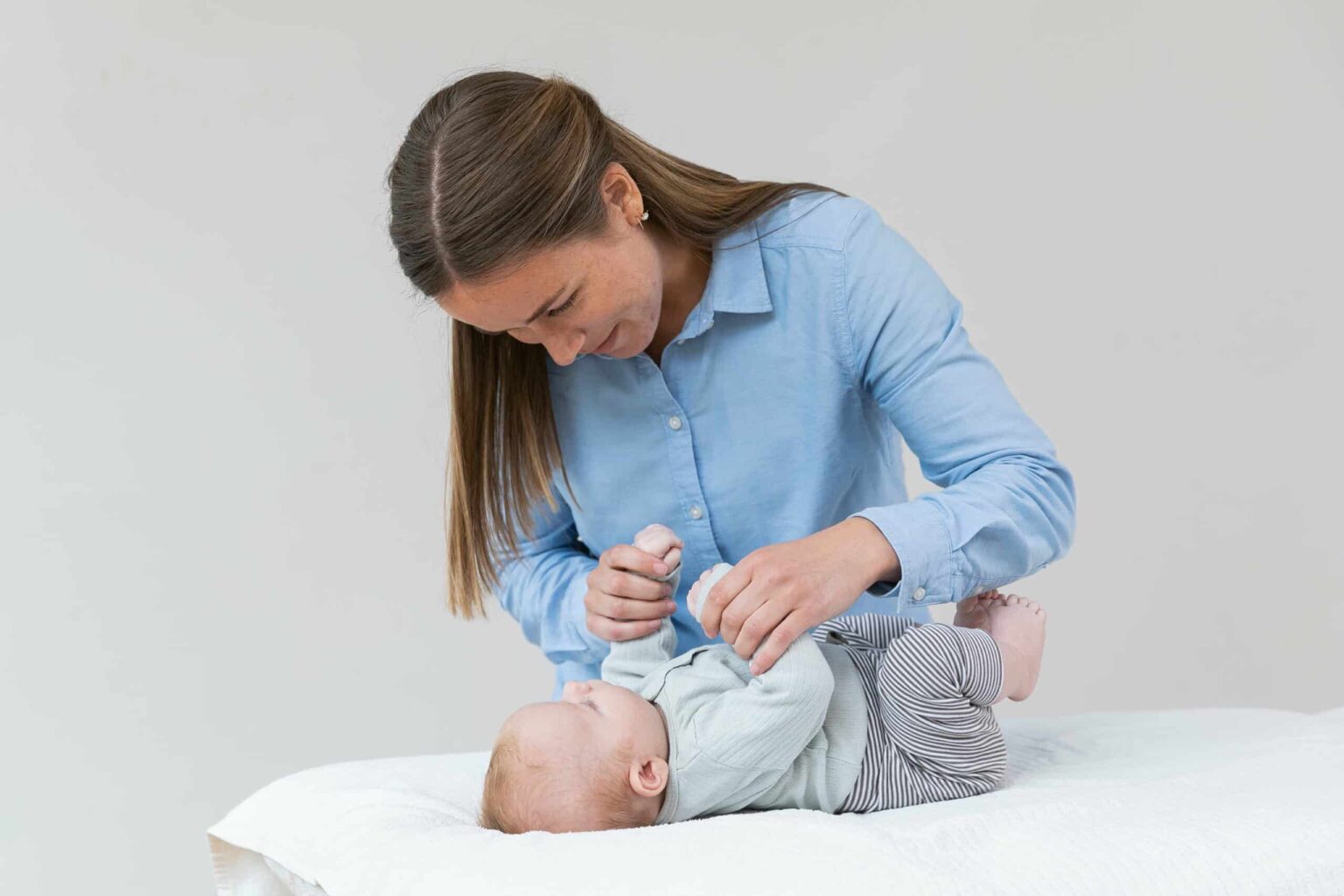
Hypermobility in babies and children
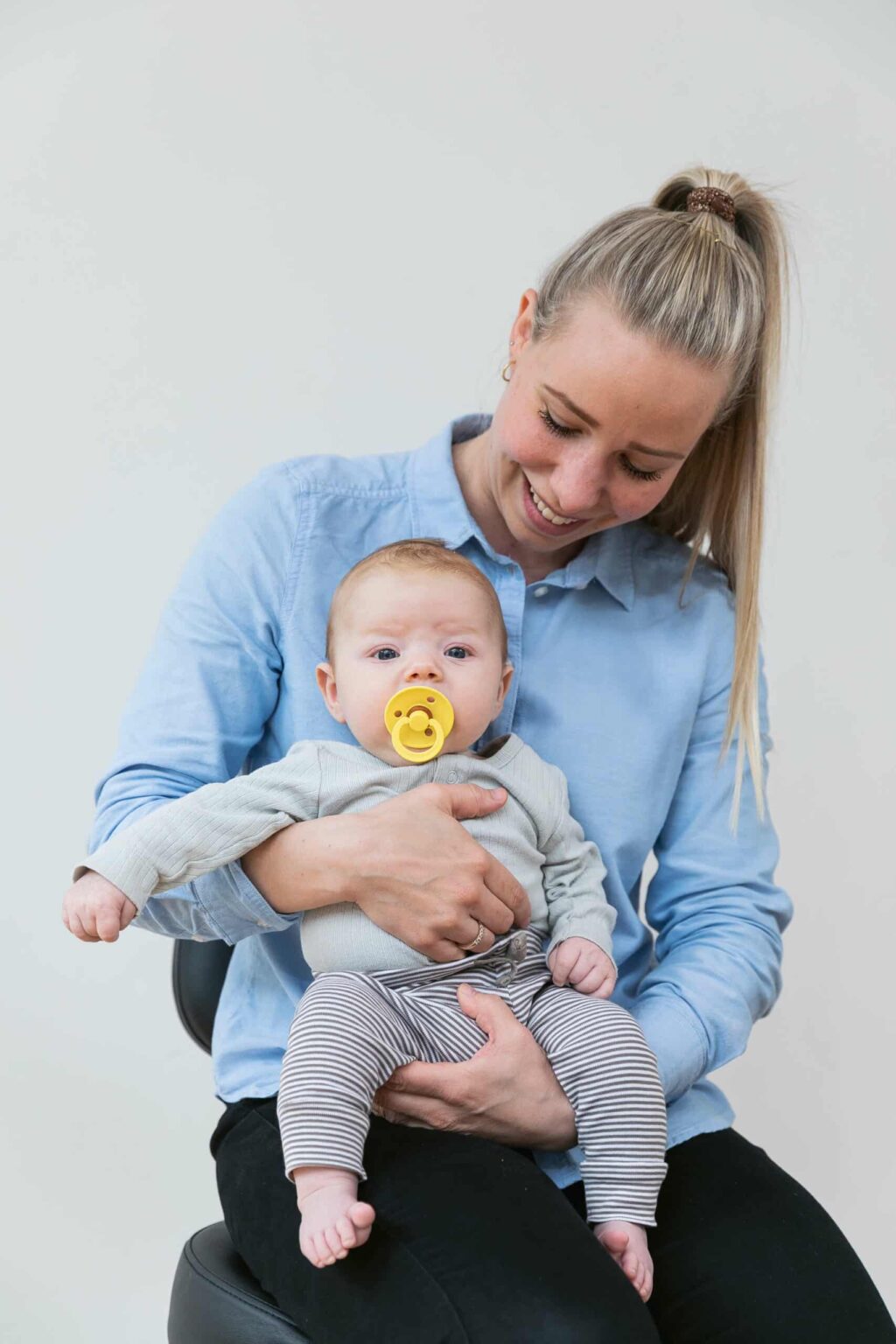
Muscle tension or imbalances in babies and children
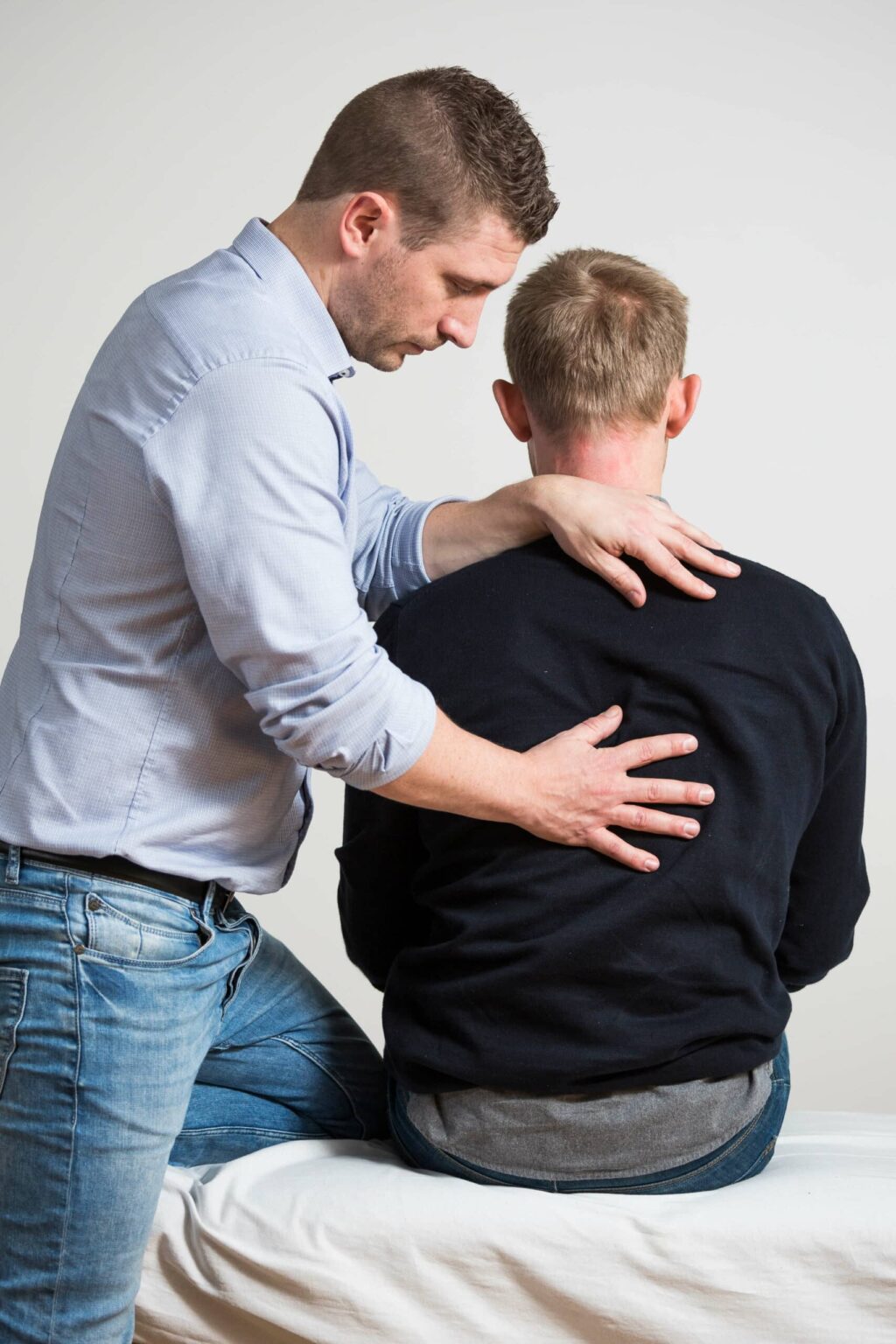
Modic Changes
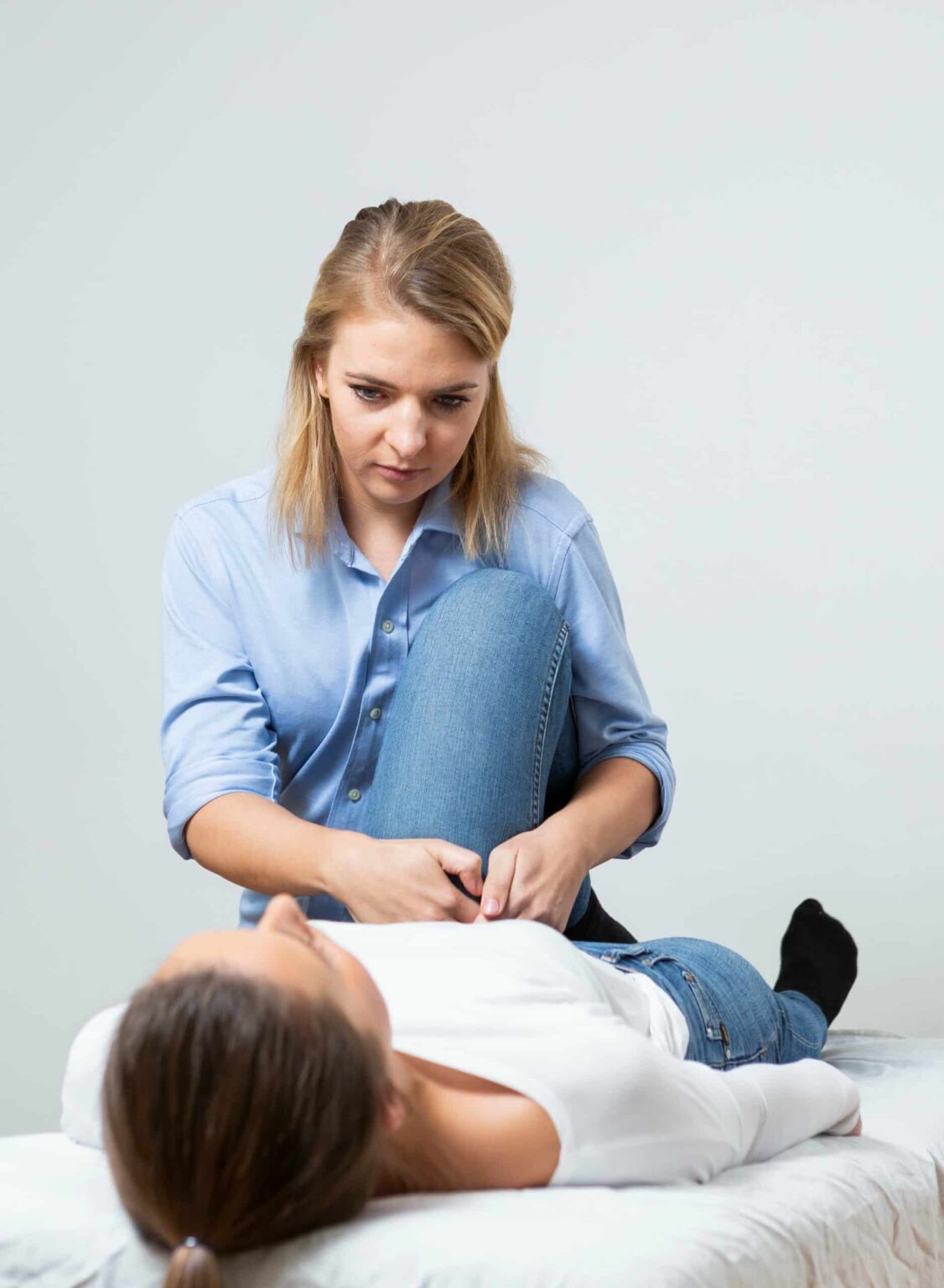
Cramps
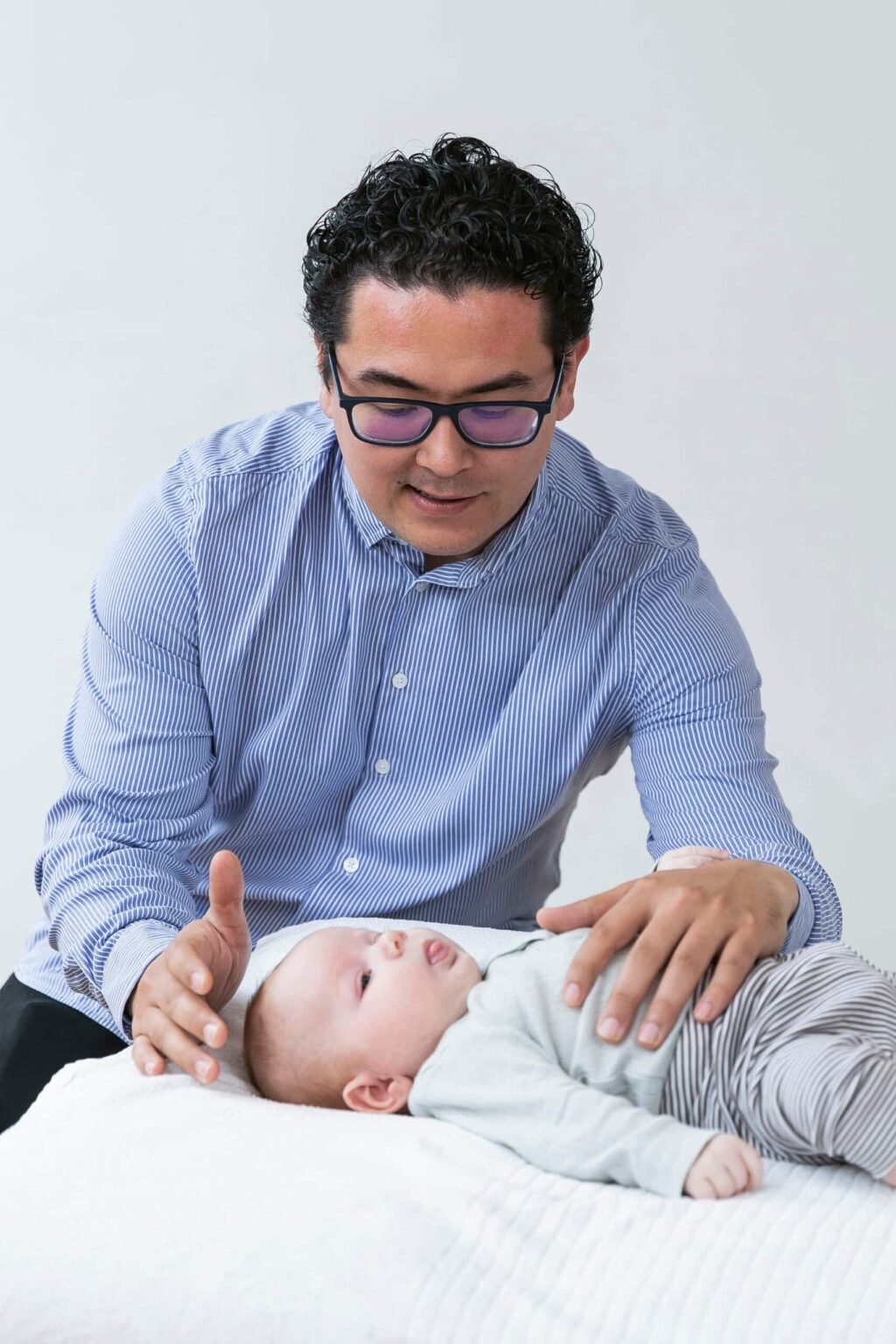
Torticollis
